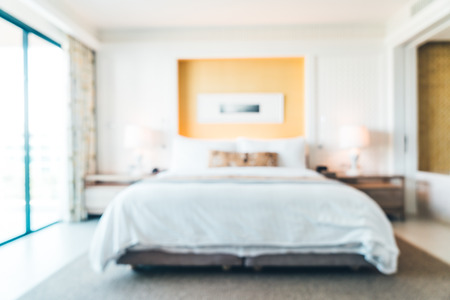1. Introduction: The Importance of Age-Appropriate Bedroom Design
In the heart of every British home, the bedroom serves not just as a place for rest, but as a sanctuary where mind, body, and spirit find daily renewal. Thoughtful bedroom design, tailored to the unique needs of each age group—children, teens, and adults—can have a profound impact on overall well-being and harmonious living. Drawing inspiration from holistic principles rooted in both traditional wisdom and modern living, an age-appropriate environment helps support restful sleep, emotional balance, and personal growth. For children, a nurturing space encourages curiosity and security; for teenagers, it becomes a safe haven for self-expression and development; while for adults, it offers tranquillity and restoration amidst life’s demands. By understanding and embracing these evolving needs within the context of British lifestyles and culture, families can create bedrooms that foster health, happiness, and harmony at every stage of life.
Designing Bedrooms for Children: Safety, Calm, and Creativity
When crafting bedroom spaces for children in the UK, it is essential to blend practical safety with a nurturing sense of balance and creativity. Drawing inspiration from both British traditions and the harmony principles often valued in holistic living, a child’s bedroom should be a sanctuary that encourages restful sleep, gentle growth, and imaginative exploration.
Child-Friendly Furniture Choices
Selecting furniture for children involves considering rounded edges, sturdy materials, and non-toxic finishes. British families often favour timeless wooden pieces—such as pine or oak—that can adapt as the child grows. Multi-functional items like storage beds or modular shelving maximise space in typical UK homes where bedrooms may be cosy yet compact.
| Furniture Type | Benefits |
|---|---|
| Rounded-edge Bed | Prevents injury, easy to access for young children |
| Modular Shelving | Flexible storage, encourages tidiness |
| Toy Boxes with Soft Closures | Safe for little fingers, encourages independent play |
Colour Schemes for Balance and Calm
The colour palette plays a subtle yet profound role in supporting a child’s emotional well-being. In the UK, soft pastels—such as gentle blues, sage greens, and warm creams—are popular choices that evoke tranquillity and connection to nature. Drawing on holistic principles, these hues help stabilise energy and foster restful sleep. Accent colours like mustard yellow or terracotta can be introduced through accessories or wall art to inspire creativity without overstimulation.
Recommended Colour Combinations
| Main Colour | Accent Colour | Mood Effect |
|---|---|---|
| Pale Blue | Mustard Yellow | Calming with creative spark |
| Sage Green | Terracotta Orange | Nurturing and energising balance |
Features That Foster Growth and Imagination
British culture values both tradition and whimsical storytelling. Incorporating elements such as reading nooks with classic storybooks or wall murals depicting countryside scenes encourages children’s imagination. Spaces for creative play—a small tent or an arts corner—support holistic development by inviting self-expression within a safe environment. Lighting is also key: soft, adjustable lamps create a soothing atmosphere at bedtime while allowing flexibility for play during daylight hours.
Key Features Checklist for UK Children’s Bedrooms:
- Sturdy bookshelves stocked with age-appropriate stories and classic British tales
- A designated creative zone (e.g., drawing table or play tent)
- Curtains or blackout blinds to promote healthy sleep rhythms aligned with local daylight patterns
- Soft rugs for warmth and comfort on chilly mornings common in the UK climate
- Personal touches—handmade crafts or family photos—to foster belonging and joy
This harmonious approach ensures that a child’s bedroom becomes not just a place to sleep but a nurturing retreat aligned with British sensibilities and the holistic cultivation of mind-body balance.

3. Teen Bedroom Inspirations: Personal Spaces for Growth and Expression
Teenage bedrooms in the UK are more than just sleeping quarters—they are vibrant sanctuaries where identity, learning, and social life harmoniously intertwine. At this pivotal stage, young people seek environments that reflect their evolving personalities while supporting both academic pursuits and emotional well-being. Drawing from a blend of British interior trends and holistic wisdom, designing a teen’s bedroom can nurture balance between mind and body.
Crafting an Identity Sanctuary
For teens, self-expression is essential. Statement bedding featuring bold patterns or favourite pop culture motifs is popular across the UK, offering a canvas for personal taste without overwhelming the space. Incorporating elements like gallery walls filled with art prints, fairy lights, and vintage finds from local markets allows individuality to shine. From a TCM perspective, encouraging teens to create their own meaningful environments supports Shen (spirit) development, fostering confidence and clarity during these formative years.
Study Spaces That Inspire Focus
With GCSEs and A-levels often at the forefront of a teen’s mind, a functional yet calming study area is key. Opt for ergonomic desks paired with supportive chairs near natural light—this not only follows UK trends but also aligns with the principle of Qi (energy) flow in Traditional Chinese Medicine. Keeping the desk clutter-free aids concentration, while touches like potted plants or herbal diffusers can promote relaxation and mental clarity.
Balancing Social Life and Rest
British teens value sociable spaces for friends to gather, whether it’s a cosy nook with bean bags or a pull-out bed for sleepovers. Soft textiles in soothing colours help maintain Yin-Yang balance—grounding overstimulation with calm energy for restorative sleep. Layering textures, such as thick throws or plush rugs, creates warmth and invites connection while keeping the room versatile enough for quiet reflection when needed.
By blending current UK design styles with ancient holistic principles, teenage bedrooms become nurturing havens—places where growth is encouraged, minds remain centred, and friendships flourish amidst the ever-changing rhythms of adolescent life.
4. Bedrooms for Adults: Creating a Restorative Retreat
For adults in the UK, the bedroom is far more than just a place to sleep—it is a sanctuary that supports stress relief, restorative sleep, and personal expression. Drawing inspiration from British aesthetics and holistic philosophies of restful rejuvenation, designing an adult’s bedroom requires thoughtful attention to comfort, style, and tranquillity.
The Essence of Restful Design
A harmonious adult bedroom should embrace elements that soothe both body and mind. Soft, neutral colour palettes such as dove grey, sage green, or classic cream create a calming backdrop inspired by the British countryside. Layering natural textures—wool throws, linen bedding, or wooden furnishings—invites warmth and grounding energy into the space. The philosophy of “less is more,” echoing both modern British design and traditional Eastern wisdom, encourages decluttering and mindful selection of décor.
Stress Relief Through Thoughtful Layout
The arrangement of furniture can have a profound impact on relaxation. Positioning the bed away from direct drafts or harsh light, and ensuring easy flow throughout the room, helps foster a sense of security. Incorporating blackout curtains for those long summer evenings and soft lighting options for cosy winter nights aligns with Britain’s unique seasonal rhythms and supports a healthy circadian cycle.
Essential Elements for an Adult Bedroom Retreat
| Element | British Aesthetic Touch | Restorative Benefit |
|---|---|---|
| Bedding | Luxe cotton duvets with subtle patterns like tartan or floral chintz | Comfort & improved sleep quality |
| Lighting | Soft bedside lamps, dimmable sconces | Promotes calm and flexibility for reading or winding down |
| Storage | Built-in wardrobes or vintage trunks | Keeps clutter at bay for mental clarity |
| Scent | Lavender sachets or beeswax candles from local markets | Eases anxiety and enhances relaxation |
| Personal Touches | Framed family photos or British art prints | Nurtures emotional wellbeing and self-expression |
Integrating Mindful Practices into Design
An adult bedroom designed for restorative rest can also support daily mindfulness routines. Consider creating a small meditation nook with a cushion by the window or incorporating gentle aromatherapy using essential oils like chamomile or cedarwood. These touches honour both modern wellness trends in the UK and age-old principles of balancing body and spirit.
A Space That Evolves with You
Your bedroom should be an evolving reflection of your lifestyle, preferences, and needs. Whether you prefer the timeless elegance of Georgian-inspired details or the minimalism of Scandi-British fusion, prioritising stress relief and restorative sleep ensures your bedroom remains a true retreat amidst life’s demands.
5. Incorporating British Traditions and Local Flair
Designing bedrooms that honour the rich heritage of the UK can nurture a sense of belonging and calm for every age group. By thoughtfully integrating classic British elements—such as tartan or floral prints, earthy textures, and time-honoured motifs—bedrooms become sanctuaries where cultural legacy and personal well-being harmonise.
Classic Prints and Patterns
For children, consider whimsical touches with Beatrix Potter-inspired wallpaper or gentle gingham bedding, grounding young minds in stories and traditions. Teens may appreciate the boldness of Union Jack accents or houndstooth cushions, subtly connecting them to national pride while allowing for self-expression. Adults often find comfort in William Morris patterns or understated stripes, echoing the timeless sophistication of British interiors.
Earthy Materials and Natural Harmony
Natural fibres like wool throws, linen curtains, and oak furnishings create a tangible link to the UK’s landscape. These materials not only provide tactile comfort but also support emotional equilibrium by echoing nature’s rhythms. For all ages, using local craftsmanship—be it hand-thrown pottery on bedside tables or woven baskets for storage—adds authenticity and warmth to the space.
Supporting Emotional Well-Being Through Tradition
The gentle embrace of familiar British design elements helps balance heart and mind. In children’s rooms, heritage toys or vintage prints offer reassurance; for teens, a blend of tradition with contemporary trends fosters both identity and rootedness; adults may find solace in antique pieces or botanical prints reminiscent of English gardens. By weaving these timeless features into bedroom designs across generations, we foster harmony between cultural connection and emotional wellness—a true reflection of holistic living inspired by both tradition and nature.
6. Nature’s Influence: Balancing Elements for Health
In the UK, where seasonal changes and urban living often limit our connection with nature, integrating natural elements into bedroom designs for children, teens, and adults becomes a vital aspect of holistic well-being. From a traditional perspective rooted in balance and harmony, these natural touches can nurture both body and mind, echoing the rhythms found in nature itself.
The Power of Natural Light
Natural light is not just a design feature—it is a fundamental source of energy that supports mood, sleep cycles, and overall vitality. In childrens bedrooms, ensure windows are unobstructed to welcome the morning sun, encouraging healthy wake-up routines. For teens, adjustable blinds or curtains allow control over light exposure during study and rest times. Adults benefit from thoughtfully placed mirrors that amplify daylight, creating an uplifting sanctuary even on grey British afternoons.
Air Circulation for Vitality
Stale air can stagnate both physical energy and mental clarity. In every age group’s bedroom, good ventilation is essential. Where possible, open windows daily—even briefly—to invite fresh air and disperse any lingering damp typical of UK homes. Consider incorporating air-purifying plants such as English ivy or peace lilies; these not only cleanse the air but also bring a touch of green vitality indoors.
Houseplants: Living Harmony
Plants act as gentle companions in bedrooms across all ages. For children, choose resilient varieties like spider plants or Boston ferns that can withstand playful hands while teaching responsibility. Teens may appreciate trendy succulents or calming lavender pots by their bedside to ease stress and promote restful sleep. Adults might select larger statement plants such as fiddle-leaf figs to create a grounding focal point, supporting emotional balance and serenity.
Designing with Nature in Mind
Ultimately, weaving natural light, fresh air, and living plants into bedroom design fosters a sense of harmony that aligns with modern UK lifestyles while honouring traditional wisdom. These elements do more than beautify—they cultivate an environment where each family member’s health flourishes, gently supporting growth through each stage of life.
7. Conclusion: Harmonising Every Age Group’s Living Space
Creating bedroom designs tailored to each age group within British households is more than an exercise in style—it is a holistic approach rooted in fostering long-term happiness, restorative rest, and deeper family connection. By thoughtfully considering the unique needs of children, teens, and adults, we honour both the physical and emotional well-being of every family member. For children, a nurturing environment encourages growth and imagination; for teens, a space that reflects individuality supports self-discovery; and for adults, tranquil bedrooms provide sanctuary from life’s demands. Drawing inspiration from traditional wisdom and the principles of balance found in both British heritage and Eastern philosophy, harmonising these personal spaces cultivates not only restful sleep but also harmonious relationships at home. Ultimately, age-specific bedroom design becomes a subtle yet powerful means to support each person’s journey—enriching daily life and weaving a stronger fabric of togetherness within the British family household.


